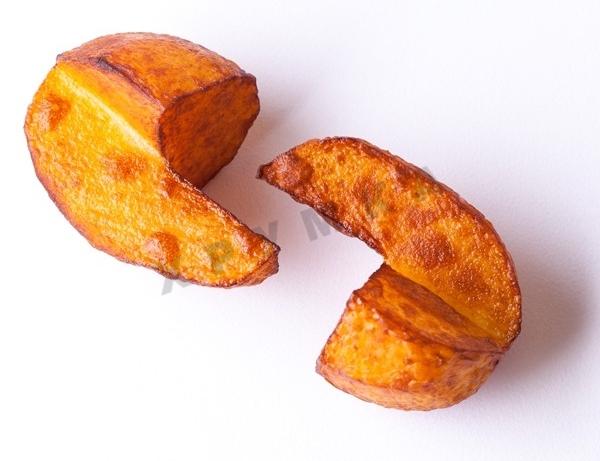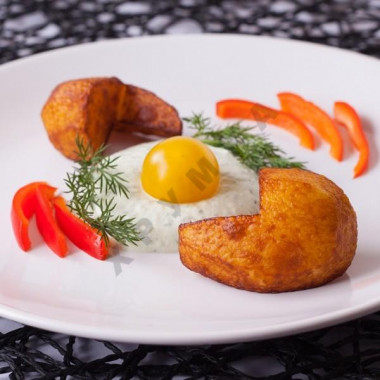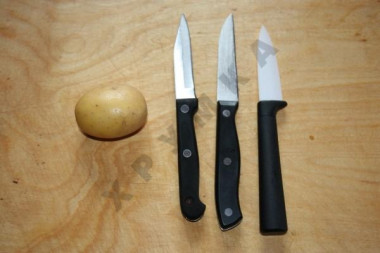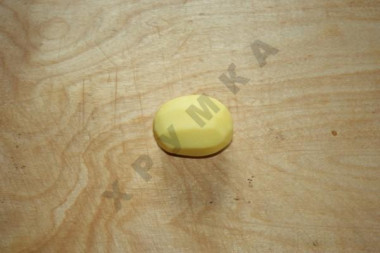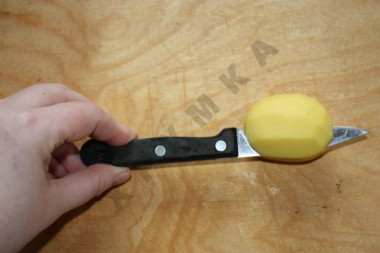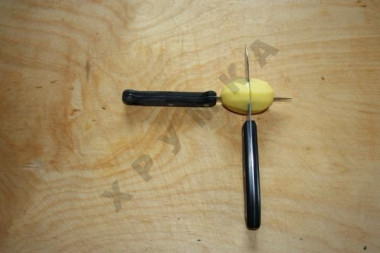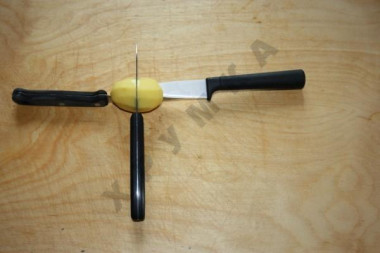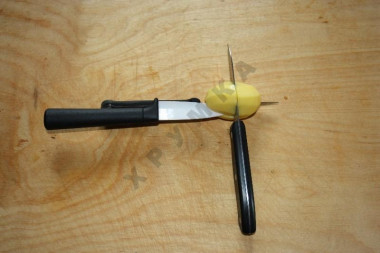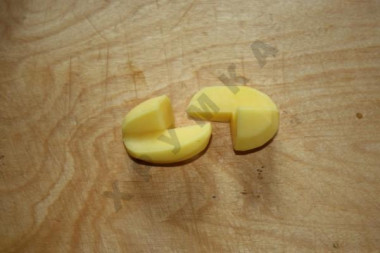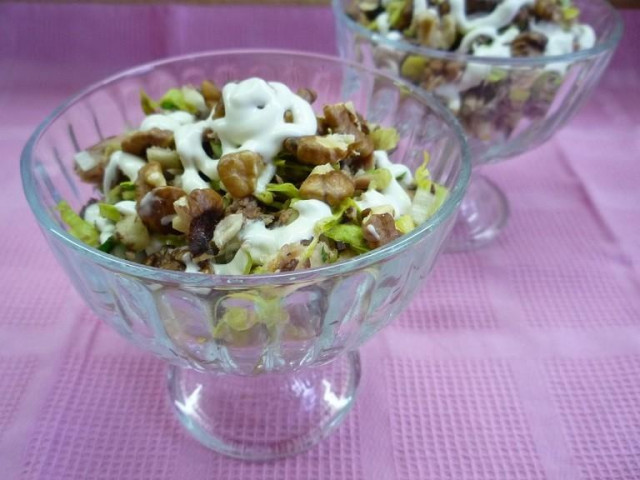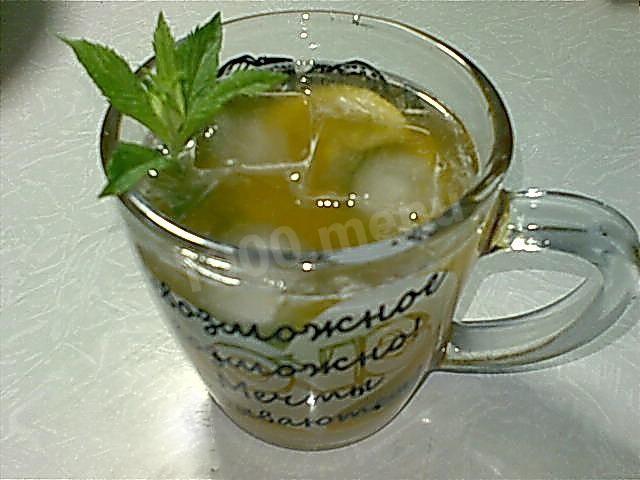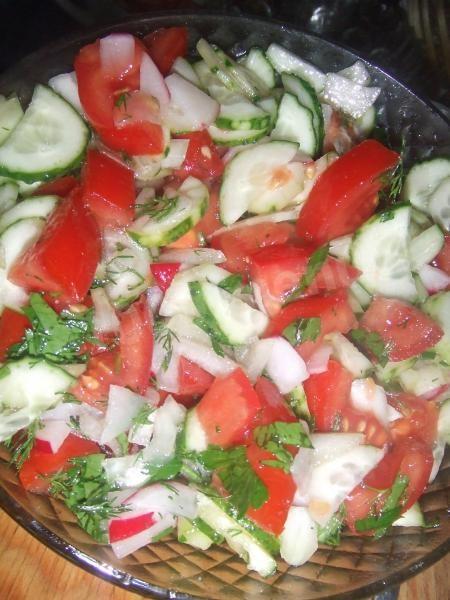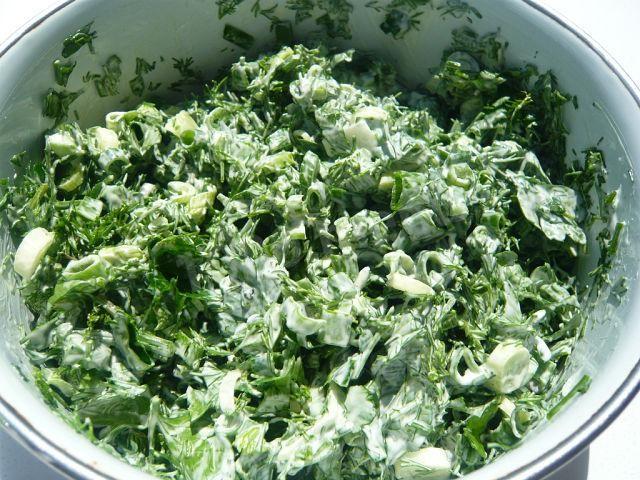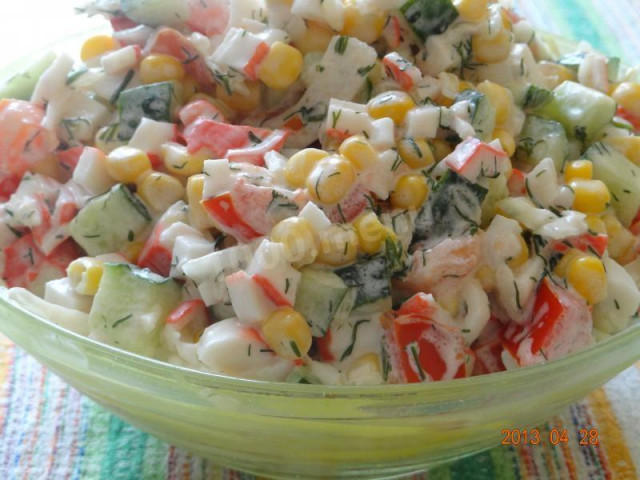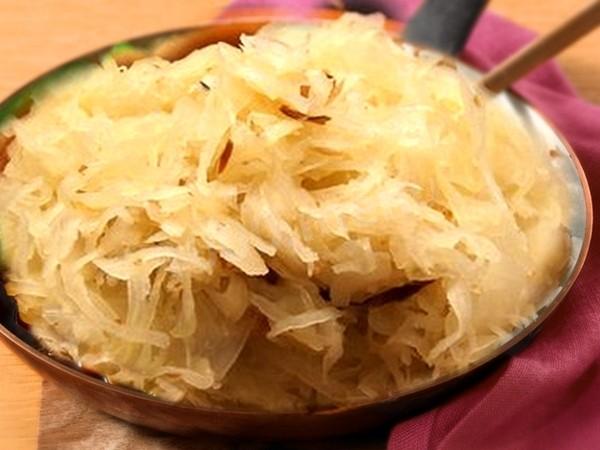Composition / ingredients
Step-by-step cooking
Step 1:
To make a three-dimensional puzzle, you need some kind of vegetable or fruit - and three knives. A beginner needs three knives, a carving specialist is quite capable of doing two. I still do not recommend one - it is possible, but inconvenient.
Step 2:
Peel the potatoes. (Citrus fruits do not need to be cleaned). You can try to make the same figure from potatoes boiled in a uniform, but then you need to let it lie for a day after boiling before cutting, so that it does not fall apart (and even then it does not always work, it depends on the variety.)
Step 3:
It's better to look at the photos further, it's difficult to describe it in text. One knife should be inserted into the object up to the central axis.
Step 4:
Insert the other knife strictly perpendicular to the first one so that their blades meet. We sort of cut the potatoes cross by cross, but not to the end, but in half.
Step 5:
With a tripping knife, you need to make two incisions in the plane from which they have not yet been. Cut with it until it comes into contact with the blades of the other two knives. So, one incision like in this photo...
Step 6:
... and the second one is like this one. Maybe the cuts did not turn out to the end - twist the knife a little more, cut through all the corners
Step 7:
Voila, the three-dimensional potato puzzle is ready!
Step 8:
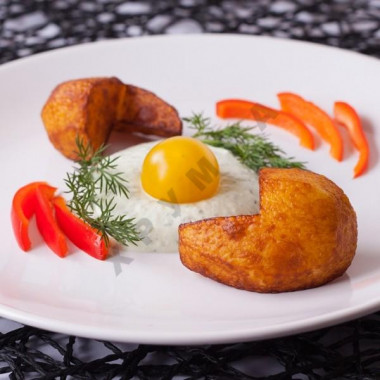
Potatoes can be fried or baked in the oven, and then served, for example, such an amazing hi-tech composition.
Caloric content of the products possible in the composition of the dish
- Ripe potatoes - 80 kcal/100g
- Baked potatoes - 70 kcal/100g
- Mashed potatoes - 380 kcal/100g
- Boiled potatoes - 82 kcal/100g
- Potatoes in uniform - 74 kcal/100g
- Fried potatoes - 192 kcal/100g
- Lemon - 16 kcal/100g
- Lemon zest - 47 kcal/100g
- Lime - 16 kcal/100g

